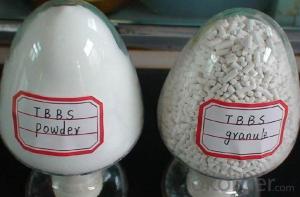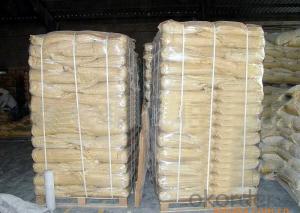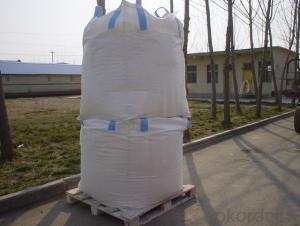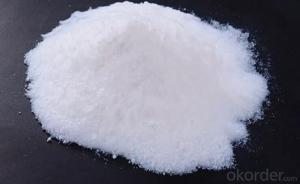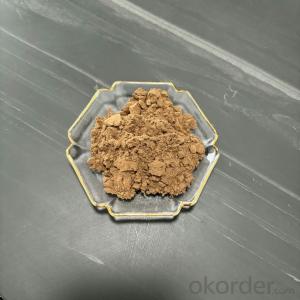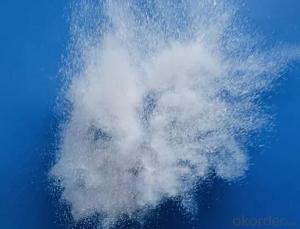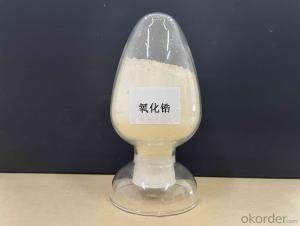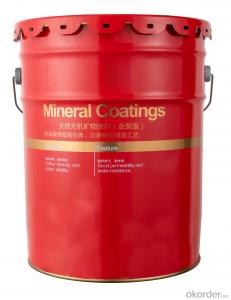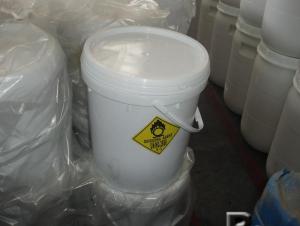Rubber Chemcials Rubber Antioxidant NBC Model
- Loading Port:
- Tianjin
- Payment Terms:
- TT OR LC
- Min Order Qty:
- 25 m.t.
- Supply Capability:
- 12000 m.t./month
OKorder Service Pledge
OKorder Financial Service
You Might Also Like
NDBC (NBC)
Chemical Name:Nickel Dibutyl Dithiocarbamate
Molecular Formula:C 18 H36 N 2 S 4 Ni
Molecular Weight:467
CAS No.:13927-77-0
Specifications:
Item
| Specifications
|
Appearance
| Dark-green Power (Granules)
|
Initial Melting Point, °C Min.
| 83
|
Heat Loss , % Max.
| 0.5 |
Nickel content , %
| 12.0 - 13.0
|
Residue on 150 µm Sieve , % Max.
| 0.10 |
Residue on 63 µm Sieve , % Max.
| 0.50 |
Properties: Dark-green Power. Density is 1.26g/ cm3 . flashing point is 260°C. Soluble in chloroform, benzene and carbon bisulfide , a little soluble in acetone, insoluble in water.
Applications: Mainly use in styrene- butadience rubber, chloroprene rubber and chlorosul-fonated polyethylene rubber. Avoiding the rubber crack for the sunshine and ozone, promoting the heat-resistant of chloroprene rubber and chlorosul-fonated polyethylene rubber. In plastic industry, it can be used as stabilitant and ozone-resistant agent for high polymer materials. It has advantage of stability for polypropylene fibre , thin film and narrow belt, but it will make the products appear yellow-green color. The use level is 0.3~0.5%. NDBC is regulated for use in articles in contact with food as specified.
Packing:Coextruded paper bags lined with polyethylene film bags. Net weight 25 kg per bag.
Storage:Store closed containers in a cool, dry, well-ventilated area. Avoid exposure to direct sunlight.
- Q:Chemical reaction plus catalyst on the △ H no effect
- Since the addition of the catalyst only accelerates the reaction process and does not have an effect on the reaction product and the reactants
- Q:what is a catalyst ?
- anything that speeds up a reaction, chemical or otherwise, between two things
- Q:The role of catalyst in chemical reactions
- Negative catalysts can be used to control the reaction rate (such as some reaction too fast, instantly release a lot of energy caused by danger, you can join), common is the antioxidant
- Q:Why the catalyst is required to have a large surface area and a rich pore structure
- Because of the chemical reaction, the larger the contact area, the faster the reaction rate, therefore, the catalyst has a large surface area or pore structure, are to increase the contact area of the catalyst and reactants.
- Q:What is the definition and function of the catalyst in chemistry?
- The catalyst plays an important role in chemical production. For example: in the oil refining process, the use of high-performance catalyst into gasoline and no other; in the car exhaust treatment process, with the catalyst to promote harmful gas conversion ...
- Q:Does a catalyst work for both reactants and products?From my understanding, organic catalyst or enzyme does not necessarily work for the product of the reaction because of the shape of the activation site. However I cannot speak for inorganic ones.
- Generally, catalysts participate and facilitate a reaction, but the catalyst is returned unchanged. For example, sulfuric acid may be used in a Fischer esterification, palladium in a Heck reaction, pyridine in an acylation reaction, hydroxide in an aldol condensation, cyanide in a benzoin condensation, etc. An enzyme can facilitate a reaction is a similar manner, by being an acid or base catalyst for example. We could say that generally, reactions are reversible. Practically, that is not true as the energy differences of the reactants and products may be so different to prevent the reverse, an explosion for example. If a reaction is reversible, that may not mean the reverse reaction will take place. Le Chatelier's Principle can apply to determine the products.
- Q:Can chemical reaction limits be changed by catalyst or other methods?
- You can use heating, pressurization and other methods.
- Q:hey people i need your help about my science lab report...the question on my paper says "what function the catalyst?....please help me on this one...i would really appreciate if you leave me answers....much mahalos to all you folkss...thanks
- A catalyst is a substance used to change the rate of a reaction. If it increases, it is posititve catalyst . Decreases means negative catalyst. If the reactants and catalyst are in same phase, it is homogenous catalysis, otherwise heterogenous. Any reaction to occur, the reactants have to combine to form an intermediate compound and then to product. This requires surpassment of a minimum amout of energy known as Ea- Activation energy. Catalyst decreased the Ea, so that , passing the barrier becomes easy and hence the speeding of the reaction.
- Q:What makes an enzyme a catalyst?
- A catalyst is a substance that speeds up a chemical reaction, by lowering the activation energy, and which is not consumed or permanently altered in the process (such that after it has catalyzed the reaction once, it can catalyze the reaction again, and again -- multiple turnover). Catalysts can be as simple as a monatomic ion; they can also be inorganic compounds, non-biological organic molecules, or biological molecules. Biological catalysts are enzymes. Enzymes meet all of the criteria for being a catalyst (speed up chemical reactions, by reducing the activation energy, and are not permanently altered).
- Q:High school stage which organic chemical reactions do not use catalyst
- Olefins, alkynes, making bromine water, potassium permanganate fade.
1. Manufacturer Overview |
|
|---|---|
| Location | |
| Year Established | |
| Annual Output Value | |
| Main Markets | |
| Company Certifications | |
2. Manufacturer Certificates |
|
|---|---|
| a) Certification Name | |
| Range | |
| Reference | |
| Validity Period | |
3. Manufacturer Capability |
|
|---|---|
| a)Trade Capacity | |
| Nearest Port | |
| Export Percentage | |
| No.of Employees in Trade Department | |
| Language Spoken: | |
| b)Factory Information | |
| Factory Size: | |
| No. of Production Lines | |
| Contract Manufacturing | |
| Product Price Range | |
Send your message to us
Rubber Chemcials Rubber Antioxidant NBC Model
- Loading Port:
- Tianjin
- Payment Terms:
- TT OR LC
- Min Order Qty:
- 25 m.t.
- Supply Capability:
- 12000 m.t./month
OKorder Service Pledge
OKorder Financial Service
Similar products
New products
Hot products
Related keywords
